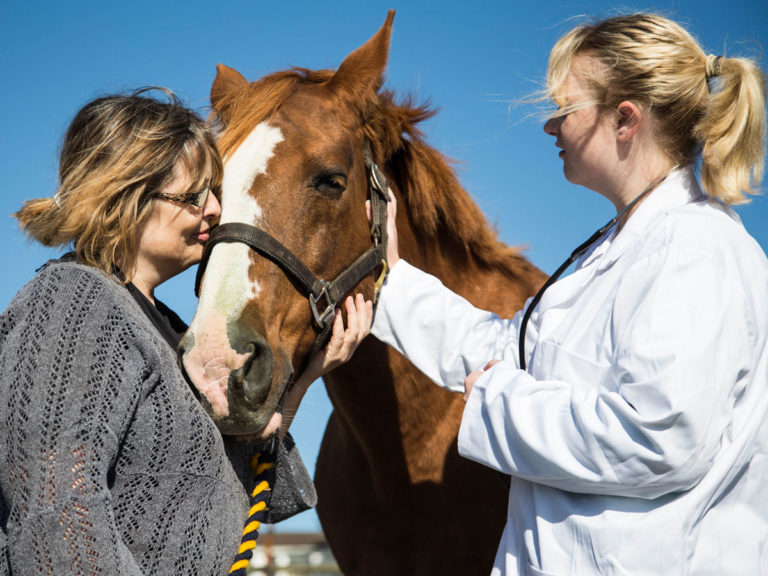Delaware Equine WNV
The Delaware Department of Agriculture has confirmed a case of West Nile virus (WNV) in Kent County. The 4-year-old Standardbred mare showed an onset of clinical signs on September 23 and went down in the pasture with a fever on September 24. The horse was still alive when the case was reported.
Ohio Reports Five New Equine WNV Cases
The Ohio Department of Agriculture Animal Disease Diagnostic Laboratory (ADDL) has confirmed five cases of West Nile virus.
- A 4-year-old Standardbred gelding showed an onset of clinical signs on September 12. Clinical signs included lethargy and moderate ataxia for 10 days, weakness in the rear limbs, and a temperature of 102 degrees F. This gelding responded to treatment and was improving as of September 22.
- A 6-year old Belgian mare began showing clinical signs on September 14, which included going down in the rear legs, with the right rear limb more affected than the left. The mare was repeatedly up and down with a temperature of 103 degrees F, and she died on September 16 despite treatment. The horse was not vaccinated against WNV.
- An adult Standardbred mare was noted as seeming “off” starting about September 5 and was first examined on September 12, presenting as down and unable to rise with weakness in the hindquarters. The mare was easily agitated from a near somnolent state, and she was euthanized after becoming unable to rise. The horse was not vaccinated against WNV.
- An 11-year-old Dutch Harness Horse mare was initially found down in a pasture on September 11. She was unable to rise and appeared to lose control of her hind limbs. There was no response to treatment and the horse was still unable to rise on September 12. Due to progressive clinical deterioration, she was euthanized that evening. The horse was not vaccinated against WNV.
- A 17-year-old Standardbred mare was first seen on September 15 for a low-grade fever (101 degrees F), and acute onset of ataxia in all four legs and muscle fasciculations in the neck and shoulders. She did not become recumbent. Serum was collected on September 19. The mare had not been vaccinated against WNV. The outcome is not known as of October 3.
These cases bring the count of equine WNV cases in Ohio to 10 for 2017 with the following counties affected: Ashtabula (1), Geauga (1), Holmes (1), Logan (2), Tuscawaras (1), Wayne (4).
Utah Reports Three Equine WNV Cases
The Utah Department of Agriculture and Food has confirmed that three horses tested positive for West Nile Virus in the central, eastern and northern regions of the state. The cases occurred in a 9-year-old Paint mare, a 2-year-old Quarter Horse gelding, and a 5-year-old Quarter Horse gelding. All were unvaccinated, but all were treated and are recovering.
There have been a total of 31 confirmed cases of WNV in Utah for 2017. For more information visit http://ag.utah.gov/animal.html.
Wisconsin Reports Two Equine WNV Cases
The Wisconsin Department of Agriculture, Trade and Consumer Protection has confirmed West Nile virus in two horses.
The first was in an 11-year-old Tennessee Walking Horse gelding with signs of incoordination, hyperesthesia and being very subdued on September 23 in Jefferson County. The horse was treated and is recovering.
The second horse is an unvaccinated Standardbred stallion in Clark County that was found down and unable to rise on September 1. The horse was being treated and was continuing to eat and drink, but unable to rise a week later with current outcome unknown. Confirmation of WNV in both cases was from NVSL.
Wisconsin Reports Equine EEE Case
The Wisconsin Department of Agriculture, Trade and Consumer Protection has confirmed Eastern equine encephalitis (EEE) in a vaccinated 7-year-old Quarter Horse mare in Prince county. The mare was vaccinated in March 2017, and on September 6 was found down. The mare was treated on that day and got up on September 17. The mare is still neurologic (hypermetric and hyperesthetic), and because the mare is pregnant she is being treated in hopes of having a normal foal. Conformation of EEE was from NVSL.
The Equine Disease Communication Center (EDCC) works to protect horses and the horse industry from the threat of infectious diseases in North America. The communication system is designed to seek and report real time information about disease outbreaks similar to how the Centers for Disease Control and Prevention (CDC) alerts the human population about diseases in people.








